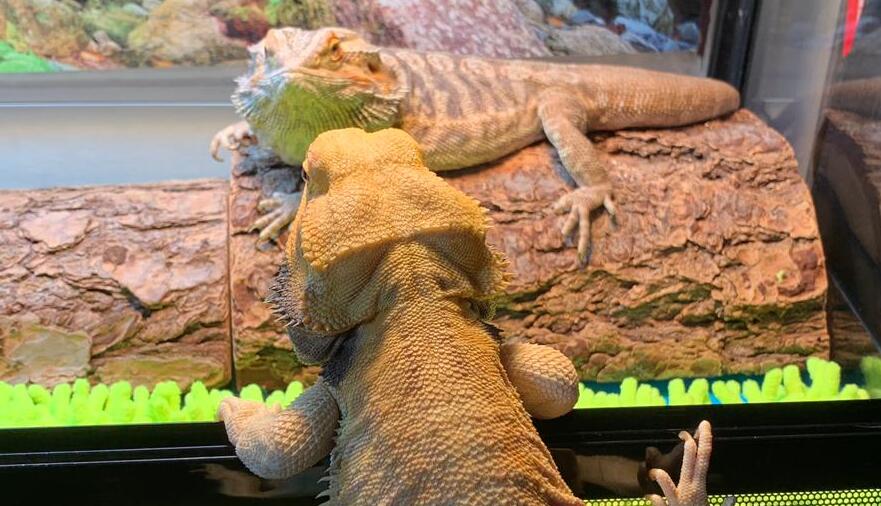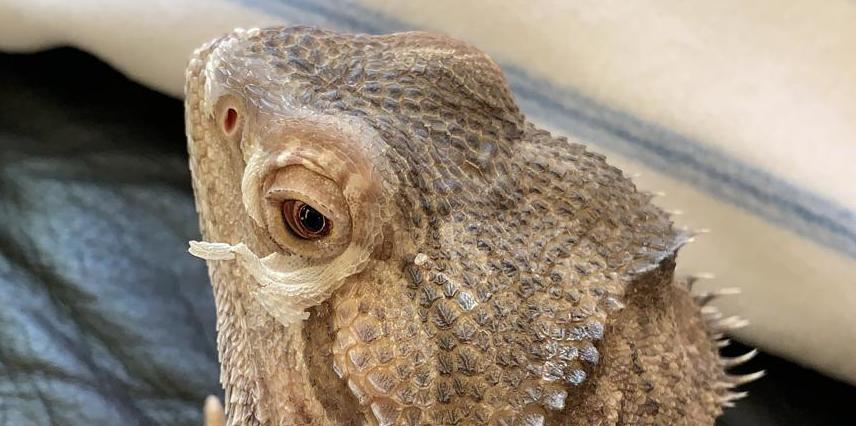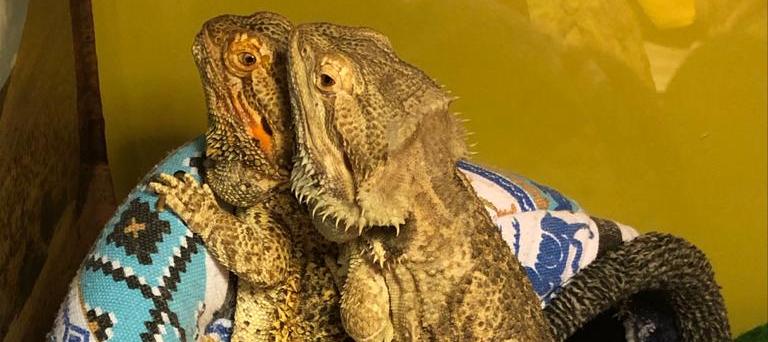Do you have a bearded dragon as one of the pets in your house? What are its most common behaviors? Are you looking forward to learning more about the bearded dragon behavior and how to deal with it?
A bearded dragon refers to the animal that has spiny reptilian scales with a beard of spikes, which makes it be called as its name. Bearded dragons have eight species known today, which can be found in certain places around the world. Also, these species are affectionately called beardies.
Now, let us move forward to the behaviors of this animal.
Table of Contents
Bearded Dragon’s Behavior
Bearded dragons, just like humans and other animals, have characters, too. As pets, bearded dragons are so sociable and like to play with their owners almost all the time. They have entertaining behaviors, but some of these are concerning the new owners. Given that, here are some of the bearded dragons’ behaviors.

Head Bob
This behavior is common to the male bearded dragons. Here, the male bearded dragons do head bobs to represent sexual readiness and dominance. This behavior is simply ad violently bobbing the head up and down. The male bearded dragons mostly use this behavior when they are in a new place to show that it is their territory. This is also their way to warn the other bearded dragons that they are dominant in that specific place.
Also, the head bob represents sexual readiness. During their mating season, the male bearded dragons use head bobs to attract the opposite sex. This is their way of attracting and asking the female bearded dragons for a mate.
Arm Waving
Another behavior that the bearded dragons do is the arm-waving. This kind of behavior is being done mostly by the young or female bearded dragons to interpret submission and belongingness. Especially when the young bearded dragons are lost, and an adult found them, waving their arms can warn the adult that they belong to one kind.
Sit with Open Mouth
A lot of new bearded dragon owners get worried when they see their pets opening their mouths while sitting. Some think that it is because of distress and weather, but there’s nothing to be worried about. Bearded dragons, just like lizards, are naturally lazy. If some pets such as dogs are so cheerful and playful every day, bearded dragons aren’t.
Black Beard
Whenever they are stressed or threatened, the bearded dragons’ beard turns black. When they can sense that there is danger coming towards them, the beard eventually turns black. This is a great opportunity to the owners for them to understand and help their bearded pet dragons.
Also, during the early life of a bearded dragon, stress lines show up on their stomach. These markings are comparable to what a leopard has. Because of their age, it is difficult to identify the stressing and threatening factors that made the markings come out. However, these markings will soon be gone and change. Besides, changing coloration is a normal phase in a bearded dragon’s life and body.
In addition, the adult male bearded dragons can have black beards whenever they are threatened or when they can sense danger is coming ahead. Not just that, bearded dragons also use this behavior to show others of its kind that they have certain dominances that must be respected. It is a sign that a bearded dragon uses to mark its territory.
The only worrying case in the black beard behavior is when the bearded dragon is not eating and acts quietly. This can be a sign of illness that must be given action to avoid further complications. It is recommended to rely upon the professionals, such as a veterinarian. This is to identify and treat a diagnosis showing illness of the pet bearded dragon. Never do home treatment if you do not know anything about treating a bearded dragon.
Shed
This is the most interesting behaviors that a bearded dragon can do. Here, the skin of bearded dragons I continuously shedding from being a baby to adulthood. It is proven that bearded dragons shed their skin due to they can grow continuously up to 4000 times their baby size.
A bearded dragon can shed in three ways. First, it can be the full body shedding wherein the skin gets off from the whole body leaving no part unshed. Next is the partial shedding wherein there is only chosen or a certain part of the body that sheds. The third is the hang around shedding, and lastly, the one that starts from an end to another.
The skin shed by the bearded dragon’s body is typically in white. Some owners, especially when they first witness the shedding process, are getting worried and think that their pet might be ill. But there is nothing to worry about for this color is normal. Also, baby beardies shed more compared to the adults.

Also, young bearded dragons may look like they are having difficulty in times of shedding. In this regard, you should put hard surfaces such as wood or rock inside their vivarium to help them ease their pain. The wood or rock is the place of relief for them where they rub their body until the skin have finally shed off. If not, and you can see that your pet is experiencing severe difficulty, it is time for you to do the action.
Although it is not recommended to bath baby bearded dragons due to their lungs are not fully developed and cannot withstand humidity, bathing them can still be a good choice. Just make sure that it is quick, and the water is warm. Take note that pulling off a shedding skin can harm your bearded dragons. It can lead to severe wounds so back off from pulling those skin off.
Eye Bulging
Some first-time owners of bearded dragons mostly get frightened by this behavior. Here, the bearded dragons bulge their eye out like it will fall out. This is their way of scaring their owners or other else. There is nothing to worry about this behavior, for it is a normal activity for them.
Bullying and Dominance
If you have more than one bearded dragon inside one vivarium, make sure to keep a good eye on them. Bearded dragons are known as solitary animals in the wild wherein they only come together during the mating season and eventually part ways when it is over. This animal loves to be alone, and when there is another one from its kind, they will start bullying and dominate each other. Fighting is always possible from two or more bearded dragons, which can lead to injuries or, worse, death.

Also, when female bearded dragons have finally nested their eggs, they must leave and let their hatchlings live on their own from the very start. This is their way of saving the hatchlings furtherer is a big responsibility that the hatchlings can be their tasty dinner.
Glass Dance
You may have seen a bearded dragon online that dances on the glass of its vivarium. Isn’t it adorable? Isn’t it cute?
Pet owners come up with different theories but they have one thing in common – each is a sign of stress. It is also their way of getting the attention of their owners to give them food or to play with them. Some of the reasons that can stress your beardie are the following:
- The tank or enclosure is too small
- New decoration elements can cause stress
- Feeling threatened by their own reflection in the glass
- Lighting, temperature can also be stressful
Bearded dragons are indeed great, aren’t they? With their multiple behaviors, they are cute and fun to be a pet. Other people may still get scared to pet this kind of animal, but there will always be a day that they’ll love and own one of these.
So, after knowing some of the most common bearded dragon behaviors, you don’t have to worry about it anymore. Most of those behaviors are competely normal and can occur every now and then. Some beardies showing their dominance more often, others less.